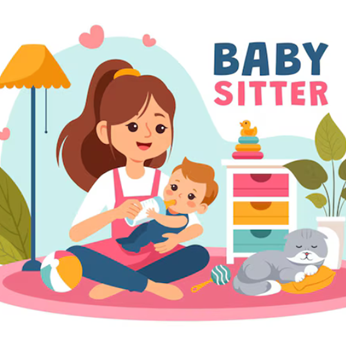Jaundice in Newborn Babies - How to Identify it Early
Jaundice a common condition among newborns caused by excess of bilirubin in the blood leads to yellow color of the skin and whites of the eye. Affecting around 9/10 newborns on the 2nd or 3rd day after birth it will reach its peak around the 4th day and would normally disappear in 2 weeks of age. Bilirubin that is produced by the normal breakdown of red blood cells normally passes through the liver to the intestines as bile that aids digestion; however newborns build up bilirubin faster than a their liver is able to break it down and pass it from the body.
There are 3 main reasons for jaundice in newborns. First newborns have a higher turnover of red blood cells than adults and make more bilirubin. Secondly the developing liver of a newborn is not able to remove enough bilirubin from the blood. Thirdly a newborn’s intestine absorbs bilirubin that would normally leave the body as stools or poop.
It is very important that liver disease is identified and treated promptly; severe jaundice not treated promptly would lead to deafness, cerebral palsy, or other forms of brain damage, with jaundice in rare cases being a sign of infection or thyroid problem.
Here are some signs to identify newborn jaundice early:
• Prolonged jaundice persists beyond 2 weeks of age in term babies and 3 weeks in pre-term babies. Newborn jaundice appears around the 2nd or 3rd day, with the baby’s skin on the face appearing yellow at first, followed by the chest, stomach and finally the legs. Sometimes the eyes of the baby also look yellow. Jaundice in babies with dark skin can be ascertained by gently pressing the skin on your baby's nose or forehead; jaundice is indicated by the skin appearing appear yellow when you lift your finger.
• Look out for persistent pale colored stools; stools of healthy bottle fed babies are English mustard yellow and daffodil yellow in breast fed babies. The color of urine other than colorless indicates jaundice or liver disease.
• Newborns with prolonged or persistent pale stools or urine indicate liver disease or jaundice; they should be urgently referred for special blood test called a split bilirubin blood test. Sometimes a light meter may be used to get an approximate measurement before taking a blood sample.
A doctor’s prompt attention is required if:
• A newborn has jaundice during the first 24 hours.
• The baby has a temperature over 100°F (37.8°C) rectally.
• The jaundice is spreading or getting darker and more intense.
• The baby starts to look or act sick.
• The newborn is sleepier than usual.
• The baby is not feeding well.
Usually mild and moderate jaundice would go away on its own in 1 or 2 weeks as the baby’s body is able to get rid of the excess bilirubin. Mothers may be recommended to give more frequent feedings of breast milk or formula to help eliminate bilirubin in their stools. However in some cases, the doctor may ask a mother to temporarily stop breastfeeding and then start nursing again once the jaundice has cleared. In severe cases phototherapy and blood transfusion may be recommended.
Image Courtesy: Google
Take the next step toward your goals
Share your requirement and find the best care providers in your area
-
Looking for a caretaker’s job? Build your profile and get in touch with families in your vicinity.
-
Discover nannies, babysitters, cooks, housekeepers, pet sitters, and elder care under one roof.
-
Get all the support you need to run a successful care center.
-
Search for appropriate centers near you depending on your needs.
Care Corner Insights: Blog Library

Nanny vs. Daycare in Naperville, IL: What Works Best for Indian Working Couples?
Hey Naperville Parents! Balancing work and family life is no small feat—especially for Indian working couples trying to juggle careers, household responsibilities, and parenting. One of the biggest decisions you’ll face? Choosing between a nanny or

Housekeepers in Sugar Land, TX: Deep-Cleaning Checklists for Indian Homes
Housekeepers in Sugar Land, TX: Deep-Cleaning Checklists for Indian Homes Indian cooking = flavor + spices + love… but also oil splatters and stubborn stains. Time to reset! Degrease stovetops, chimneys, and exhaust fans. Scrub countertops, tiles,

12 Easy After-School Snack Ideas for Kids Who Get Hungry Quickly
School’s out, and the hunger hits hard! If your little ones come home ravenous and ready to raid the kitchen, you’re not alone. After-school snack time is prime time for refueling, recharging, and maybe even sneaking in a little nutrition. So here ar

Vegetarian Home Cook Services in Sunnyvale, CA: North & South Indian Meal Prep for Busy NRIs
Between work, family, and daily responsibilities, finding time to cook fresh meals can be difficult. That’s when a vegetarian home cook service in Sunnyvale makes life easier—bringing authentic North and South Indian dishes straight to your table. T

Hiring a Live-In Nanny in Plano, TX: A Practical Guide for NRI Households
For NRI families living in Plano, TX, raising children while managing work and household responsibilities can feel overwhelming. Many parents find that hiring a live-in nanny provides the right balance of support, convenience, and cultural comfort. U

Daycares in Fremont, CA for Indian Toddlers: Curriculum, Food Policies & Waitlists
You’ve probably met them — the parents at the park chatting about Montessori vs. play-based learning while handing their toddler a homemade paratha. The ones who ask every daycare in Fremont if they serve vegetarian meals. And yes, the ones who have

Babysitters in Jersey City, NJ for NRI Parents: Last-Minute, Weekend & Evening Options
You’ve probably seen them — the parents juggling grocery bags in one hand and a phone call to grandma in India in the other, while trying to keep their toddler from running into the road. The ones who cancel dinner plans because the babysitter bailed

Best Nanny Services in Edison, NJ for Indian Families: Costs, Language, and Cultural Fit
Edison, NJ, is home to one of the largest Indian communities in the U.S., and finding a nanny here often means looking for more than just childcare skills. For Indian families, cultural understanding, language fluency, and traditional values play a b

What Is Helicopter Parenting? How It Affects Children and Ways to Avoid It
You’ve probably seen them. The parents at the playground who shadow every move, wiping invisible germs off the slide before their child touches it. The ones who fill out job applications for their teens. And yes, the ones who email college professors

Are Weighted Blankets Safe for Children? Pros and Cons Explained
Weighted blankets have become a cozy trend in recent years. From helping adults sleep better to calming anxiety, they’ve earned a spot in many households. But when it comes to kids, especially the little ones, parents often ask: Are weighted blankets